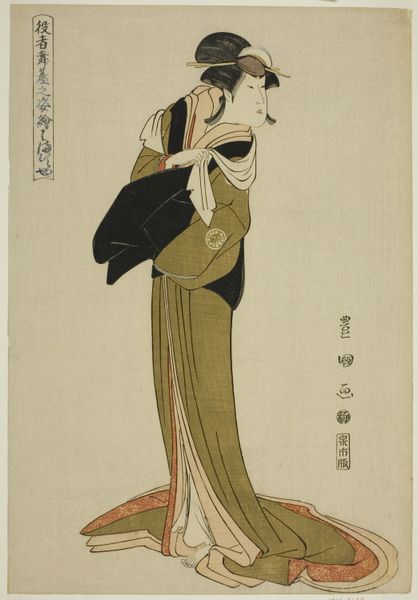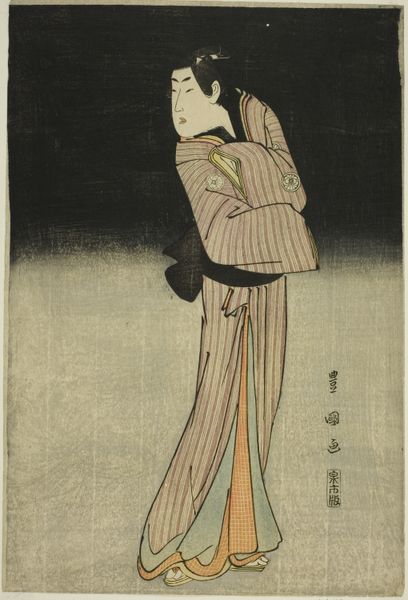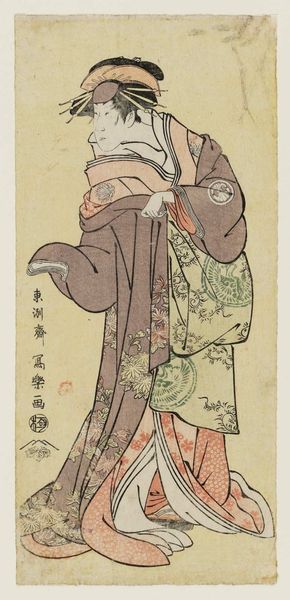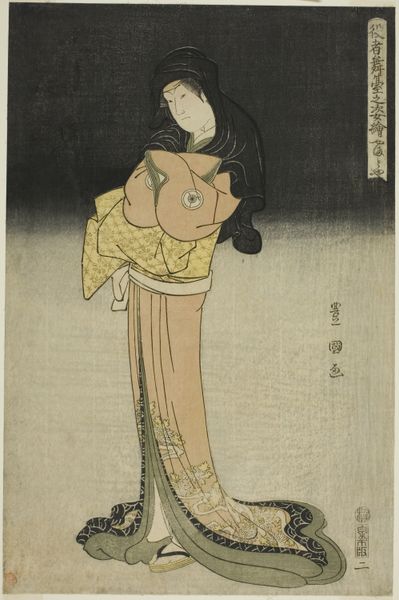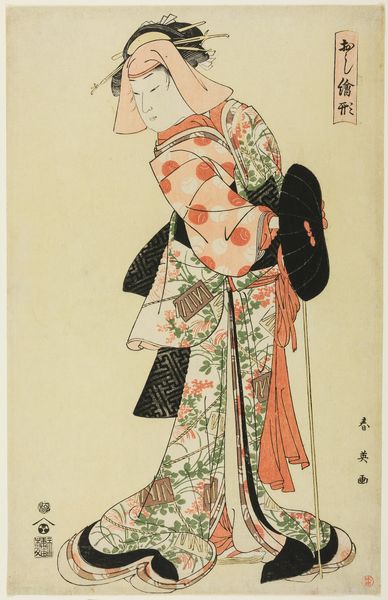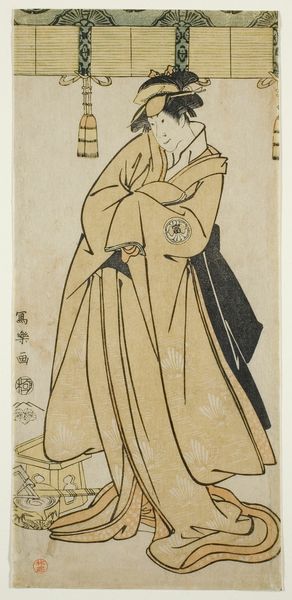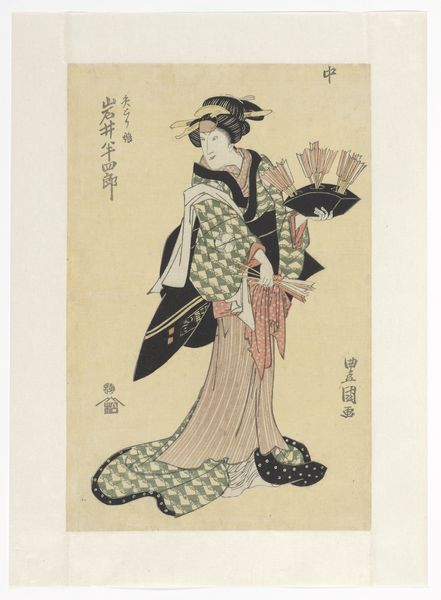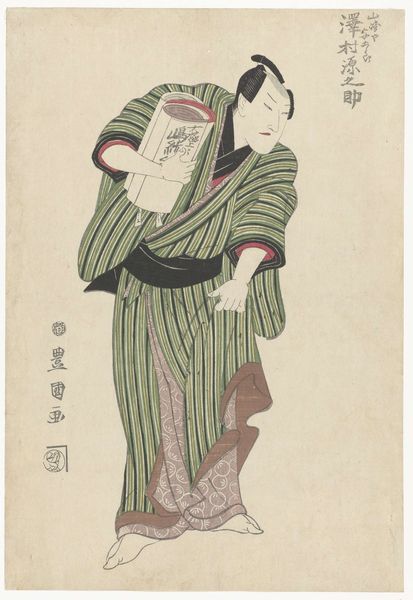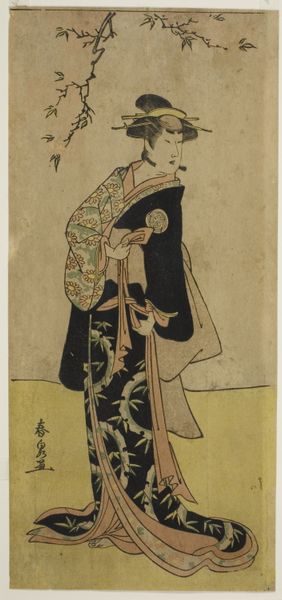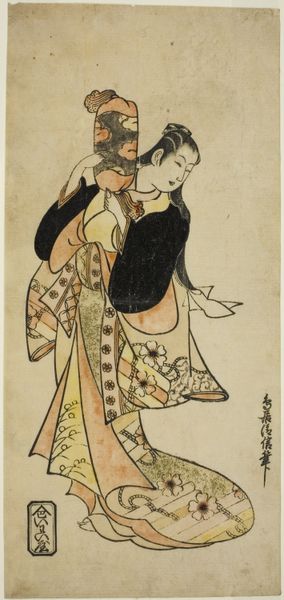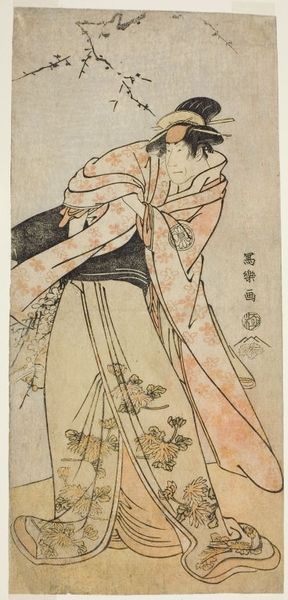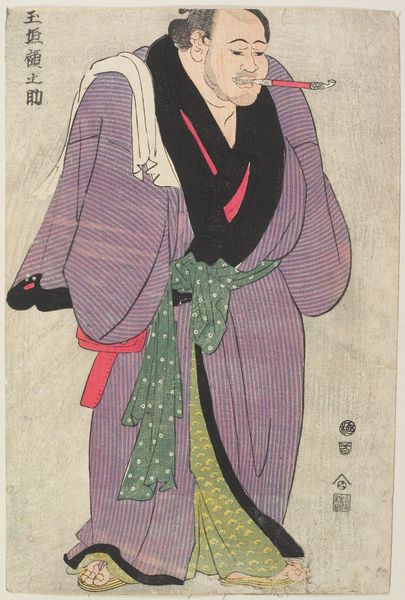
Hamamuraya: Segawa Kikunojo III as the courtesan Koman, from the series "Portraits of Actors on Stage (Yakusha butai no sugata-e)" 1795
0:00
0:00
print, woodblock-print
#
portrait
# print
#
asian-art
#
ukiyo-e
#
figuration
#
woodblock-print
#
genre-painting
#
history-painting
Dimensions: 37.7 × 24.3 cm (14 13/16 × 9 9/16 in.)
Copyright: Public Domain
Curator: This woodblock print, dating back to 1795, is titled "Hamamuraya: Segawa Kikunojo III as the courtesan Koman, from the series Portraits of Actors on Stage." It was crafted by Utagawa Toyokuni I. Editor: Immediately, the controlled color palette strikes me, the dominance of greens against the flat background lending an almost melancholic air to the figure. Curator: Utagawa was, of course, known for his portraits of Kabuki actors, a vibrant element of the Edo period’s cultural scene. The actor depicted here, Segawa Kikunojo III, was celebrated for playing female roles, or onnagata. It gives a strong sense of the blurred gender norms during this period. Editor: Notice the precise linearity of the folds of the kimono. The texture is quite interesting and it looks thick because of the line quality. The simplified rendering is far from literal, suggesting the weight of fabric not through illusionistic detail but rhythmic arrangement. Curator: The historical context here is particularly rich. These prints weren’t just simple souvenirs. They document performances, public identities, and trends of the Kabuki theatre that operated under strict sociopolitical structures that often censored narratives seen as dissenting. Editor: You are right, looking at the larger shape that this woman creates gives me that feeling, and her lips, look at her red lips. And what does it mean that her neck is pale? Curator: Kabuki, as a form of expression, often subverted official authority in popular entertainment. In that context, the portrait also became a commentary of social freedom versus rigid regulations, thus opening the doors for further discussions about gender in Japanese culture and art. Editor: Precisely. By attending to the relationship between figure and form and how she is represented is of most value here. Curator: Yes, and considering this image's broader implications during the time of its creation reveals how artwork may contain layered significances. Editor: These kinds of portrait not only depicted public idols and how they performed gender, but also the importance of the arts and print media during the time period. I now leave with the lasting impressions that this object has a voice even beyond its physical form.
Comments
No comments
Be the first to comment and join the conversation on the ultimate creative platform.
